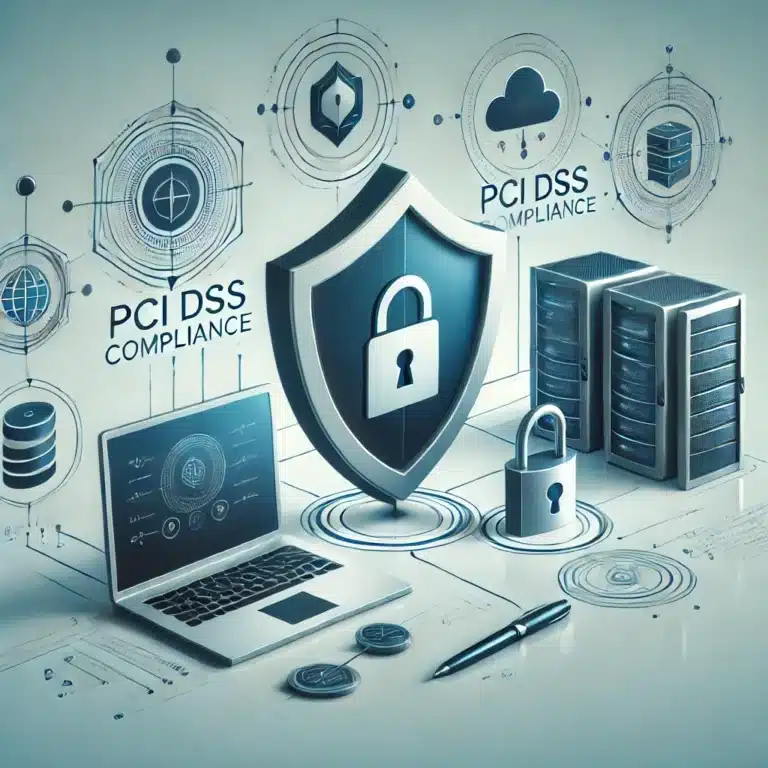The landscape of payment security continues to evolve, and organizations handling cardholder data must stay ahead of the curve to protect sensitive information effectively. With the future-dated requirements of PCI DSS v4.x set to take effect on 31 March 2025, now is the perfect time for businesses to begin implementing the new controls. These requirements represent a significant advancement in data security, and proactive adoption will not only ensure compliance but also fortify your organization against emerging threats.
While the deadline may seem distant, adopting the new requirements early gives organizations ample time to plan, implement, and refine the necessary controls, reducing the risk of rushed compliance efforts or potential gaps in security. In this post, we’ll explore why now is the ideal time to prepare for the PCI DSS v4.x changes, what the new requirements entail, and how collaborating with your Qualified Security Assessor (QSA) can ensure a smooth and effective transition.
The Countdown to March 2025: Why Act Now?
Although 31 March 2025 is the official deadline for the future-dated requirements of PCI DSS v4.x, waiting until the last minute to implement these changes is a risky approach. The new controls are designed to strengthen security and address evolving threats in the payment ecosystem. Early adoption provides several key advantages:
1. Avoiding Compliance Gaps: Rushing to meet deadlines often results in missed or incomplete controls, increasing the risk of non-compliance and security vulnerabilities. Starting early allows your organization to carefully assess and implement the necessary controls, ensuring you meet the new requirements effectively.
2. Reducing the Compliance Burden: Transitioning to PCI DSS v4.x may require updating systems, processes, and policies. Implementing these changes gradually helps distribute the workload over time, making it more manageable for your team. This also allows for thorough testing and validation of controls before the deadline.
3. Improving Security Posture: The new requirements in PCI DSS v4.x aren’t just about meeting compliance—they represent best practices in data security. By adopting them early, organizations can strengthen their defense against cyber threats and demonstrate a proactive commitment to protecting sensitive payment information.
Key Future-Dated Requirements in PCI DSS v4.x
PCI DSS v4.x introduces several future-dated requirements that aim to enhance security in key areas such as authentication, encryption, and risk management. Some of the most impactful changes include:
1. Enhanced Authentication Controls: Multi-factor authentication (MFA) requirements will be expanded, requiring stronger authentication mechanisms for both internal and external access to cardholder data environments (CDEs). Organizations will need to ensure that all access to sensitive systems is protected by robust MFA controls.
2. Updated Encryption Standards: PCI DSS v4.x introduces stricter guidelines for encryption, including the use of stronger cryptographic algorithms to protect data both in transit and at rest. This will require organizations to assess their current encryption methods and update them as necessary.
3. Continuous Risk Assessment: Under the new standard, risk assessments must be conducted more frequently, with organizations required to regularly review and update their security posture in response to emerging threats. This shift encourages a culture of ongoing vigilance and adaptability.
4. Increased Focus on Monitoring and Logging: PCI DSS v4.x emphasizes improved logging and monitoring to detect and respond to suspicious activity in real time. Organizations will need to implement enhanced monitoring tools to ensure that any anomalies within the CDE are quickly identified and addressed.
Why Early Engagement with Your QSA is Critical
During the transition to PCI DSS v4.x, partnering with your Qualified Security Assessor (QSA) is essential to ensure clarity and effectiveness throughout the process. The new requirements may be complex, and working closely with a QSA can help streamline implementation, identify potential gaps, and ensure that your compliance efforts align with your organization’s broader security objectives.
1. Tailored Guidance: Your QSA can provide specific insights into how the new controls apply to your unique environment. By engaging early, you can clarify any ambiguities, prioritize the most critical changes, and develop a clear roadmap for compliance.
2. Proactive Compliance: Early collaboration with a QSA allows you to address compliance challenges well before the deadline. This not only reduces the risk of falling short on key requirements but also gives you time to test and adjust controls as needed, ensuring they function effectively in real-world scenarios.
3. Continuous Improvement: QSAs bring a wealth of expertise in PCI DSS and can help your organization adopt best practices that go beyond basic compliance. They can also offer insights into how your organization can enhance its overall security posture by integrating the new requirements into daily operations.
Strategic Steps to Prepare for PCI DSS v4.x
To ensure a successful transition to PCI DSS v4.x, organizations should adopt a strategic approach that includes:
1. Conduct a Gap Analysis: Start by conducting a comprehensive gap analysis to identify areas where your current controls fall short of the new requirements. This will give you a clear understanding of what needs to be addressed and allow you to prioritize efforts based on risk.
2. Build a Transition Plan: Develop a detailed transition plan that outlines the steps, timelines, and resources needed to implement the new controls. Breaking the process into smaller, manageable phases ensures that your team can focus on each requirement effectively.
3. Train Your Team: The new requirements may introduce changes in how your team operates, particularly with enhanced authentication, encryption, and monitoring controls. Training staff on these updates ensures that everyone understands their role in maintaining compliance and protecting cardholder data.
4. Collaborate with Third Parties: If your organization relies on third-party service providers to handle or process cardholder data, ensure they are also prepared to meet the new PCI DSS v4.x requirements. Collaboration and communication with third parties will help minimize gaps in compliance.
Conclusion: Future-Proof Your Compliance Today
The upcoming PCI DSS v4.x future-dated requirements, set to take effect on 31 March 2025, represent a pivotal opportunity for organizations to not only meet compliance but also elevate their overall security practices. By adopting the new controls early, businesses can reduce the risk of non-compliance, improve their security posture, and be well-prepared for the next wave of cyber threats.
Engaging with your QSA during this transition is crucial for ensuring clarity and effectiveness. QSAs can provide valuable guidance, help you avoid common pitfalls, and ensure that your compliance efforts are aligned with your organization’s strategic goals.
Now is the time to act—start implementing the future-dated requirements of PCI DSS v4.x and future-proof your organization’s payment security.




